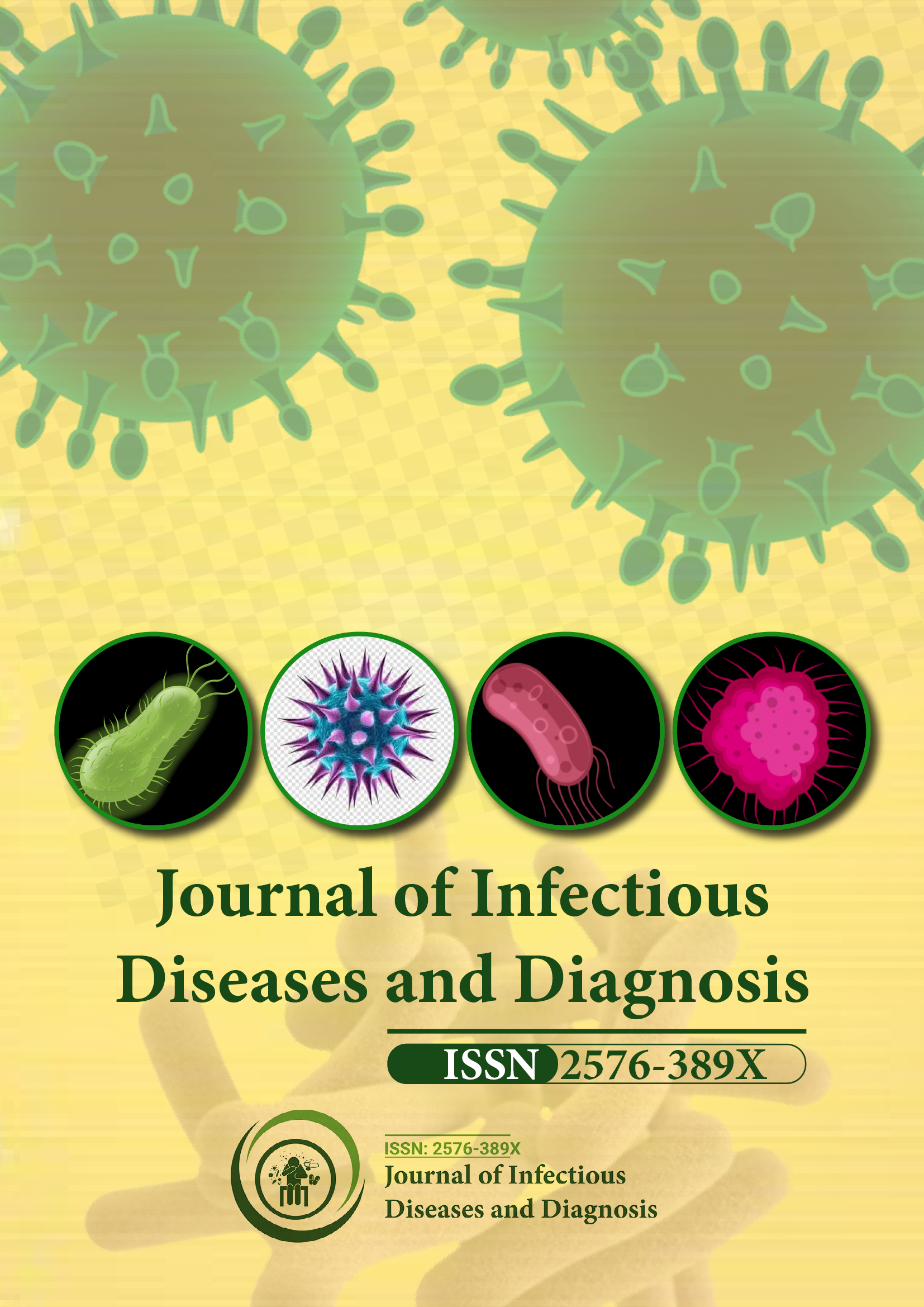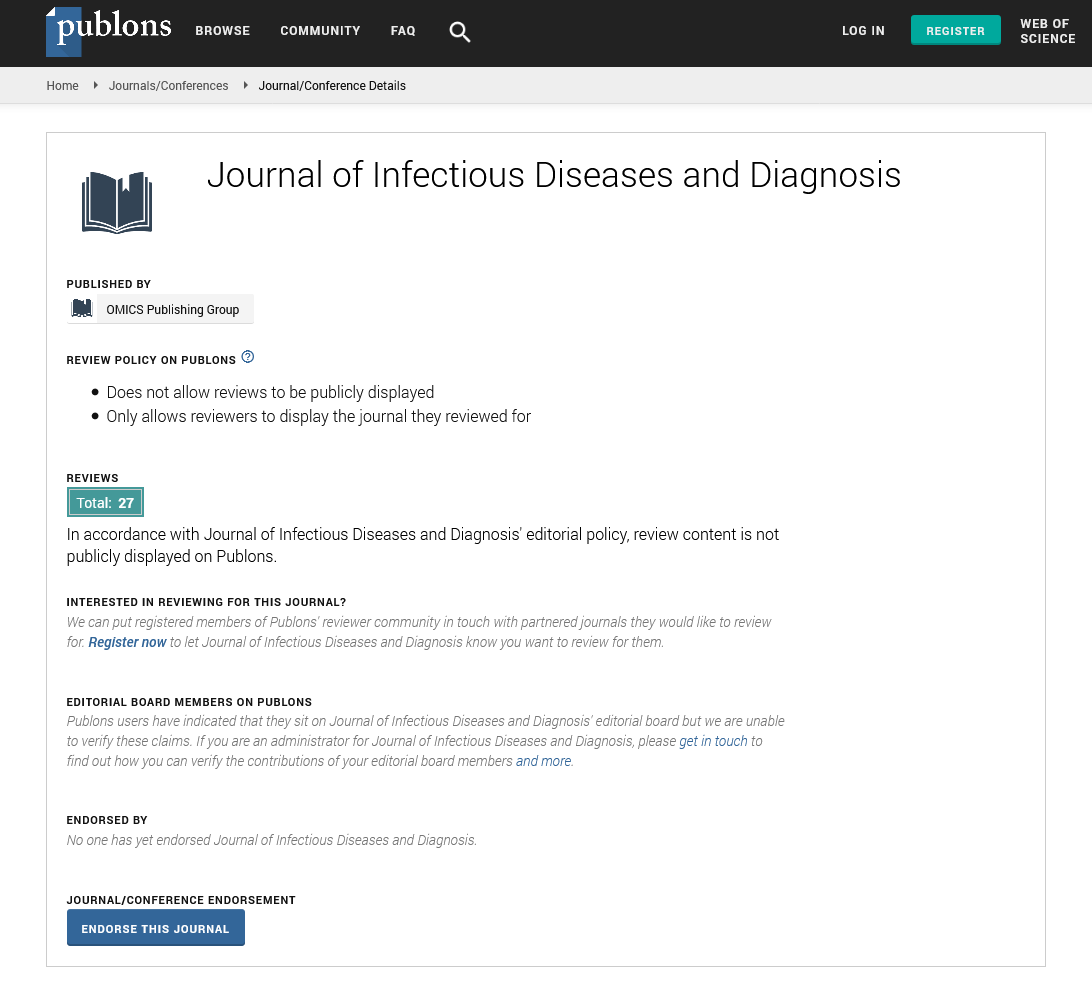Indexed In
- RefSeek
- Hamdard University
- EBSCO A-Z
- Publons
- Euro Pub
- Google Scholar
Useful Links
Share This Page
Journal Flyer

Open Access Journals
- Agri and Aquaculture
- Biochemistry
- Bioinformatics & Systems Biology
- Business & Management
- Chemistry
- Clinical Sciences
- Engineering
- Food & Nutrition
- General Science
- Genetics & Molecular Biology
- Immunology & Microbiology
- Medical Sciences
- Neuroscience & Psychology
- Nursing & Health Care
- Pharmaceutical Sciences
Commentary - (2023) Volume 8, Issue 1
A Retrospective Study over Certification in Infection Control and Epidemiology Examination
Jan Michiels*Received: 02-Jan-2023, Manuscript No. JIDD-22-19894; Editor assigned: 04-Jan-2023, Pre QC No. JIDD-22-19894 (PQ); Reviewed: 18-Jan-2023, QC No. JIDD-22-19894; Revised: 25-Jan-2023, Manuscript No. JIDD-22-19894 (R); Published: 01-Feb-2023, DOI: 10.35248/2576-389X.23.08.193
About the Study
Infection control and epidemiology examination is a vital aspect of healthcare that aims to prevent the spread of infections and protect patients, staff, and visitors. The examination includes identifying and tracking infections, implementing interventions to prevent the spread of infections, and monitoring the effectiveness of the interventions. It also includes identifying the epidemiology of infections, which is the study of the distribution and determinants of infections in populations.
One of the key components of infection control and epidemiology examination is surveillance. Surveillance is the ongoing collection, analysis, and interpretation of data on infections. The data collected through surveillance can be used to identify patterns and trends in infections, which can inform the development of interventions to prevent the spread of infections.
Another important component of infection control and epidemiology examination is infection control. Infection control measures are implemented to prevent the spread of infections. These measures include hand hygiene, use of personal protective equipment, and environmental cleaning. It is also important to educate staff and patients on the importance of infection control and the specific interventions that are being implemented.
The effectiveness of infection control and epidemiology examination should be regularly evaluated and monitored. This may include reviewing data on infection rates, as well as assessing the impact of interventions on infection rates. Any identified trends or patterns in infection rates should be investigated and addressed promptly. Additionally, the program should be reviewed and updated regularly to ensure that it is aligned with current best practices and guidelines.
Another important aspect of infection control and epidemiology examination is identifying the epidemiology of infections. Epidemiology includes identifying the distribution and determinants of infections in populations. This information can be used to target interventions to specific populations and settings, and to understand the underlying causes of infections. For example, if a certain type of infection is found to be more common in a certain population, interventions can be targeted to that population to reduce the risk of infections.
Effective communication is crucial for the success of infection control and epidemiology examination. This includes sharing information about infection rates and trends with staff, patients, and families. This can help to improve transparency and trust, and it can also help to raise awareness about the importance of infection control and prevention. Additionally, it is important to collaborate with other healthcare organizations and public health agencies to share information and best practices.
Implementing infection control and epidemiology examination can be challenging, particularly in resource-limited settings. Limited resources, lack of staff buy-in, and difficulty in obtaining accurate data are all potential obstacles that may need to be addressed. However, with proper planning, implementation, and evaluation, an effective infection control and epidemiology examination program can be established to improve patient safety and outcomes in healthcare settings.
Conclusion
In conclusion, infection control and epidemiology examination is a vital aspect of healthcare that aims to prevent the spread of infections and protect patients, staff, and visitors. It includes identifying and tracking infections, implementing interventions to prevent the spread of infections, monitoring the effectiveness of the interventions, identifying the epidemiology of infections, and effective communication. Implementing such a program can be challenging but with proper planning, implementation, and evaluation, it can improve patient safety and outcomes. It is important to collaborate with other healthcare organizations and public health agencies to share information and best practices.
Citation: Michiels J (2023) A Retrospective Study over Certification in Infection Control and Epidemiology Examination. J Infect Dis Diagn. 8:193.
Copyright: © 2023 Michiels J. This is an open-access article distributed under the terms of the Creative Commons Attribution License, which permits unrestricted use, distribution, and reproduction in any medium, provided the original author and source are credited.

